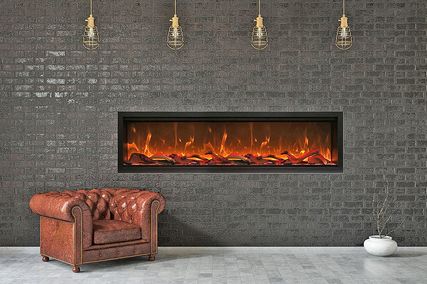WHY ARCHITECTURE MATTERS 1
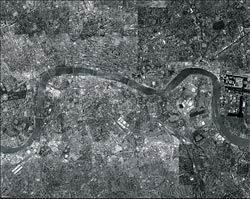
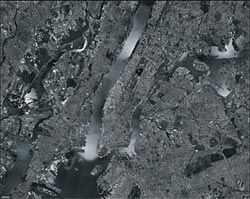
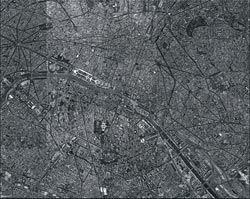
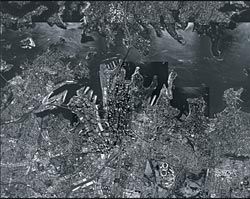
Aerial views of London, New York, Paris and Sydney.
Denser environments, better amenity and the conservation of natural resources – for Alec Tzannes architecture has much to contribute in the rebuilding of urban Australia.
I’ve been asked to comment on “why architecture matters”. As architects most of us naturally think that architecture matters.
We know that our skills make a positive contribution to the design and management of the built environment. We have a passion for well-designed public places as well as buildings, interiors and even artefacts of all types. We are often at the centre of community debate, whether we like it or not, about what is “good” or “in the public interest” and consequently, we help shape “the way forward” in relation to the myriad of vexing issues that define change in the built environment.
Many may challenge this view, but on the whole, I find that the communities we serve value the work we do and our opinions. In other words, we “count” in some way when decisions are made about the built environment and (despite the protests of many architects) we are reasonably empowered as a profession to contribute to its design and management.
After all, who understands more than architects the architecture of the public domain or the creative potential of space, light and materials? Which other profession is more directly concerned on a day-to-day basis with the efficient use of energy, functional utility, construction value and concerns for public benefit in the design of the built environment?
Places everywhere are defined in large part by the quality of the built environment that we collectively create as well as manage in response to the ever-changing requirements of the human condition. We know architectural history and from this knowledge contemplate the future with inspiration to design places and buildings that move us emotionally, that have visual and operational beauty and many layers of interpretive meaning. We are the profession that likes to make artefacts of lasting cultural value at the scale of a building or even a part of a city. As a Sydney-based architect I cannot imagine Sydney without contemplating the Opera House, Macquarie, Bridge or George Streets or its fine buildings. Sydney is, in effect, defined by the work of architects, like most other places.
Imagine the day when we don’t have to ask the question “why does architecture matter?”. We would know by then the benefits of a city with abundant well-designed public places and buildings of beauty in both public and private ownership. A city where the architects, politicians, clients and their representatives as well as all the other people who contribute to the design process were known and their roles made transparent.
A place where architecture was funded from an understanding of the relatively low long-term risks associated with good architecture. A culture that trusted architects mainly as a result of their reliable education and track record from countless success stories in history. A place where the question “why does architecture matter?” did not need to be asked.
Fortunately (or unfortunately) there is too much to do in urban Australia to allow architecture not to be important. While much exists of value, almost everywhere you go and almost everything you look at needs the hand of an architect, ideally supported by an empowering culture that allows the architect to work responsibly and effectively.
Of all the issues facing architecture today, none, in my view, can be more pressing than creating denser environments that deliver high standards of amenity to assist the conservation of natural resources. This is not to say that there isn’t an important, often inspirational role for architecture created without the pressures of density.
My view, controversial perhaps, is that much of urban Australia needs a complete rebuild. If opportunity for change to the built environment is made available at this scale, the potential exists to simultaneously address other major planning and environmental issues in the course of the rebuilding process. From this perspective, Australia would have to be one of the places in the world today where architecture matters the most – where the future work for architects is substantial and essential in every form it is manifest.
ALEC TZANNES IS DIRECTOR OF TZANNES ASSOCIATES AND NATIONAL RAIA PRESIDENT ELECT.
WHY ARCHITECTURE MATTERS 2
Timothy Hill argues that it is what we do that matters, not why – and that, as a profession, we need to get much better at describing what architects actually can do.
The reasons why architecture matters to people, not just architects, are similar to the reasons why other cultural endeavours matter to people. Cultured societies rely on dance, song, food, stories, architecture and so forth. The extension and celebration of these endeavours can be exercised without complex associations with “elites”. They are simply, well … cultural. We are reminded of this when we travel offshore to holiday, to do business, or to be with families who for many Australians live in the world away from this island. There is something about this time, this place and our profession that has a complex relationship with the country’s functional development and its utilitarian pragmatism.
Let’s just leave the why question at that.
Anthropologists, or sociologists, or the very wise – like Philip Rieff – can sort this out elsewhere.
Dear Architecture Australia readers, if we leave the “why” business alone it leaves us free to tell the story about what we do, rather than having to whip up interest in why our outputs are important. This would save us from having to pretend that our prowess at conducting covert operations with optimism and resilience, while putting up with crap – to simply do our job – is somehow connected with the “Architecture” we read about in magazines.
Yes, there is a gulf between “Architecture” and architectural practice. With haunting prescience, John Summerson identified this separation or “mischief” in the early 1950s, when testing some cliches used in the justification industry, “…although they do not tell us anything about Modern Architecture, they do tell us something about the Modern Architect. They tell us this: that he [sic] has for some reason or another stepped out of his role, taken a look at the scene around him and then become obsessed with the importance not of architecture, but of the relation of architecture to other things.” ›› Only by acknowledging this gap can we “speak plainly”, and thereby tell a useful story, focus on making better buildings and make some straightforward moves that put our professional house in order. We architects matter. The way our society conducts itself in order to make buildings matters, and the way our profession differentiates itself from service-providing salespersons matters.
Occasional examples remind us of this.
Few Australians know quite why the Opera House is so magnificent (part of its beauty is that it makes such a hybrid set of offers all at once), but most know that it would have been better if we had conducted ourselves in a cultured way to procure it. The story of “what went on” almost always accompanies the contemplation of its beauty. Worse goes on in our every current practice day, but as architects we never tell this story. (Although we reliably subscribe to self-congratulatory celebrations of buildings “as found”).
Nearly every publication reveals numbers of marvels, with descriptions of the building, the “Architecture”, as the gracious rendition of the architect’s canny insights breezily brought to fruition. In turn, this allows the Alain de Botton’s of the world to announce that “Architecture is significant” because of its cultural potential, and to bemoan that so much architecture is lacking. But de Botton naively thinks that architects have some form of direct, nineteenth-century association with the buildings society ends up producing. You and I know better.
(Up here in the land that brought you the cane toad we are involved in procurement processes that make what went on at the Opera House look like labrador luv.) The buildings, simply, are not designed by us.
There is a boom but it is not “design led”.
We routinely allow commentators to get away with this rather than encouraging them to be openly revealing about the fact that architects have little real impact on most buildings, and even less constructive participation in Australian city-making.
When state premiers announce that the densifying cityscape is “getting a bit nasty on the eye”, we should agree with zeal.
Then we could illustrate why the forms of built environment production in Australia are destined to yield compromised projects.
In turn, this would allow us to demonstrate that focussing on “projects” instead of the public realm has the effect of multiplying the misunderstanding. If we have the courage to practice with conviction, then it will put the pressure on the intellectual capital that forms a continuing core of our profession. Instead of persisting with explanation I shall try to illustrate by directly being suggestive:
1. Be very ambitious but realistically modest in putting together the new awards criteria. It ought to work like a charter that can be published generally and relentlessly, and needs to reconcile the architecture/ architect schism. An award for best procurement process would seed a lot of useful plain speaking. Self-nomination for any award ought to be abandoned. Seeking referees on the basis of the charter would generate excellent dialogue.
2. Through the universities, offer architectural design “diploma-ettes” to the spivs who actually orchestrate the fabrication of Australian cities. Yes, it’s a knowledge economy and driving a svelte German-badged vehicle to a “continuing education opportunity” is all the rage.
Charge a lot for it (perhaps a discount for town planners) and use the money to attract brilliant design teachers.
3. Negotiate on behalf of architectural academics (who are marginalized by their own universities) to enable brilliant design teachers to have a path of academic advancement.
4. Be clear that typical Australian building budgets are ridiculously small – a case of first-world styling on a beer budget.
When everyone refuses to spend more, ally with the property industry and then let them loose with the tax argument. Up to 40 percent of project delivery cost is a form of tax, the worth of which is not plowed back into the built environment.
5. Charge a lot. Computers, compliance, over-communication, risk intervention, regulatory zeal, crowds of specialist consultants, modes of practice that allows an unnecessarily large number of project participants to make changes to everything all the time – all this makes contemporary practice much more expensive than twentieth-century methods.
6. Set up a banking/broking arm of the RAIA to negotiate fees and pressure payment. Clients can go to non-members for alternatives. Engineer the cash flow to generate research money. Welcome a row with the ACC to generate free publicity about the issue.
7. Regularly publish examples from the vast pool of what often are architects best work – unbuilt schemes. Explain why they were not built.
8. Admit a lot of doubt, generally and confidently and publicly – so that we at least come across as caring and credible, if only to ourselves. Ban spin.
Anyway, this is enough hectoring for me.
I have drawings to do and a conference to organize that might encourage us all to participate in this discussion.TIMOTHY HILL IS A DIRECTOR OF DONOVAN HILL AND CREATIVE DIRECTOR OF NEXT YEAR’S RAIA NATIONAL CONFERENCE.






